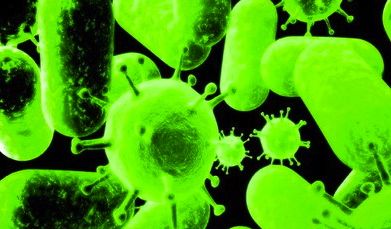Enterococcus solitarius: Difference between revisions
Igor.malenko (talk | contribs) |
Igor.malenko (talk | contribs) |
||
| Line 14: | Line 14: | ||
]] | ]] | ||
'' | ''<I>Enterococcus solitarius</I>'' | ||
==Description and significance== | ==Description and significance== | ||
Revision as of 03:28, 30 April 2013
A Microbial Biorealm page on the genus Enterococcus solitarius
Classification
Higher order taxa
Bacteria;Firmicutes;Bacilli;Lactobacillales;Enterococcaceae;Tetragenococcus
Species
Enterococcus solitarius
Description and significance
Enterococcus solitarius has been first described by Collins et al.(1989) after being isolated from a human sample. This strain was identified on the basis of established physiological tests and so far it is also the only known strain (Facklam & Collins (1989). Since these were the only tests used to identify it, this strain has often been misidentified (Buschelman et al., 1993; Ruoff et al., 1990; Tsakris et al., 1998) and actually, E. solitarius “seems to be more closely associated to the members of the genus Tetragenococcus” (Barros et al., 2001; Collins et al., 1990; Ke et al., 1999; Patel et al., 1998; Williams et al., 1991). There are suggestions that E. solitarius and Tetragenococcus halophilus possibly "form a single taxon” (Ke et al., 1999; Monstein et al., 2001). Conversely, this debate is still alive, since the latest study “based on the sequence of a highly specific fragment within the enterococcal superoxide dismutase gene clearly placed E. solitarius among enterococcal species” (Poyart et al., 2000). A new study comparing both Enterococcus species and Tetragenococcus species still needs to be performed in order to establish whether E. solitarius is a “miscategorized taxon”.1
Genome structure
The 16S rRNA gene sequences in phylogenetic analyses lead to the suggestion that E. solitarius is actually not an enterococcal species, since its 16S rRNA gene sequence is too different from those of other Enterococcus species. This is the reasoning for the suggestion not to include it in the same genus. "More recently, while performing sequence analysis of the16S rRNA genes of lactic acid bacteria inhabiting paddy rice silage, it was also noticed that E. solitarius was only remotely related to other enterococci" (Ennahar et al., 2003). Enterococci-specific PCR assays (Keet al., 1999) and whole-cell-protein profiles (Barros et al.,2001) showed consistency with 16S rRNA gene sequence data. 1
Cell and colony structure
Gram positive Enterococci that usually occur in pairs (diplococci) or short chains, and are difficult to distinguish from streptococci, based on physical characteristics alone.
Metabolism
Enterococci solitarius are anaerobes. They produce lactic acids by fermenting carbohydrates (lactic acid bacteria). They live in the large intestine and are using the undigested sugars from the small intestine as well as the indigestible fibers for their fermentation process.
Ecology
Found in many different places – normally found in the feces of people and many animals. They are facultative anaerobe bacteria that inhabits the intestines of both humans and animals. Enterococci are capable of living in extreme conditions that are usually too harsh for other bacteria. They often inhabit the bowels of animals or humans, and they are also found in soil, vegetation, and surface water. Enterococci are capable of growing at temperatures between 10-45 °C and can grow in both hypotonic or hypertonic, as well as acidic and alkaline environmental conditions. They are anaerobes, but despite, they can live in both low and high oxygen environments. Enterococci can survive at 60 °C for 30 minutes. They exists in high salt concentration (6.5% NaCl), in high bile salts (40%), and are also known to be able to be naturally antibiotic resistant.
Pathology
They can be also the cause of other diseases – bacteraemia (blood stream), endocarditis (heart vales), and meningitis (brain) – which occurs mostly in severely sick people with weak immune system. Many of these Enterococcus infections have been commonly found in clinical environment. Healthy people with strong immune system will not be affected by Enterococci but they many become potential carriers.
References
1.http://ijs.sgmjournals.org/content/55/2/589.full.pdf+html?sid=dcc03966-c22b-4aa4-b20f-d5534dafb20f Biochemical and genetic evidence for the transfer of Enterococcus solitarius Collins et al. 1989 to the genus Tetragenococcus as Tetragenococcus solitarius comb. nov. Saïd Ennahar and Yimin Cai
2.Collins et al., 1990; Patel et al., 1998; Williams et al., 1991).
Edited by I. Malenko of Dr. Lisa R. Moore, University of Southern Maine, Department of Biological Sciences, http://www.usm.maine.edu/bio

